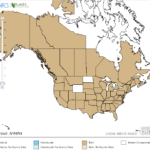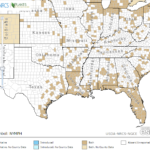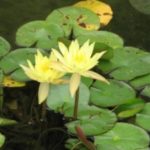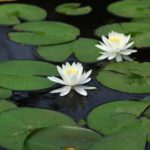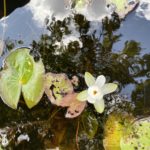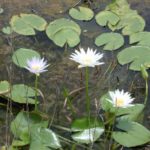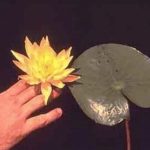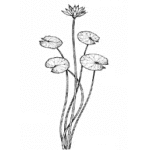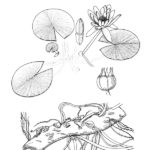Nymphaea spp.
USDA, NRCS. 2018. The PLANTS Database (http://plants.usda.gov, 28 March 2018). National Plant Data Team, Greensboro, NC 27401-4901 USA.
Illustration courtesy of University of Florida/IFAS Center for Aquatic and Invasive Plants. Used with permission.
What is Water Lily?
Physical Characteristics
Leaves:
- Oval-shaped
- Fleshy
- Green on top
- Purple or red on bottom
Flowers:
- Found above water
- Many colored
Stem:
- Fleshy rhizomes
Where Does it Grow?
Water lily can be found in ponds, lakes, slow streams and ditches.
Pros and Cons of Water Lily
Submerged portions of all aquatic plants provide habitats for many micro and macro invertebrates. These invertebrates in turn are used as food by fish and other wildlife species (e.g. amphibians, reptiles, ducks, etc.). After aquatic plants die, their decomposition by bacteria and fungi provides food (called “detritus”) for many aquatic invertebrates.
What Type of Water Lily Do I Have?
There are three common types of water lilies in North America. Click on the buttons to learn more about each species.
